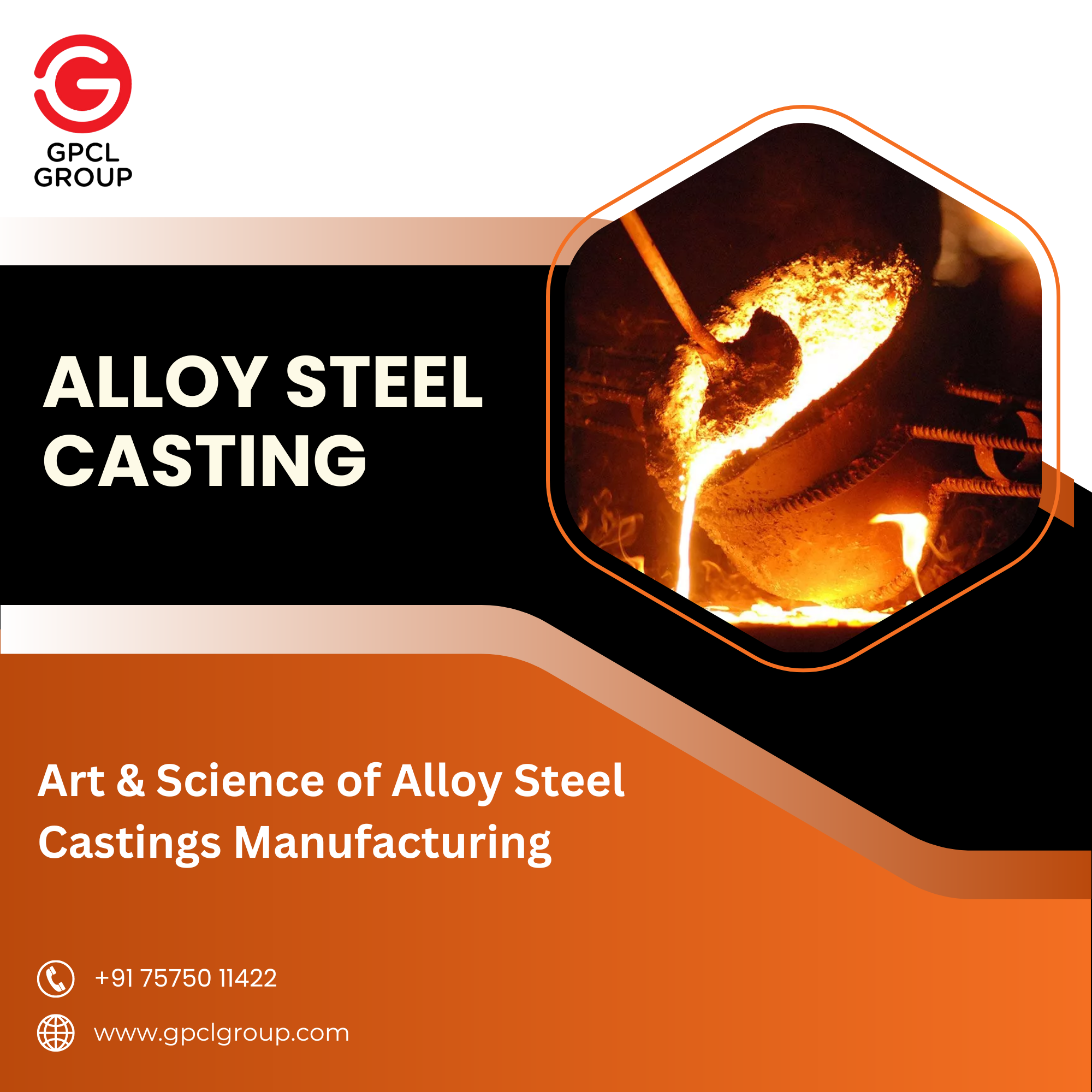In the realm of industrial manufacturing, alloy steel castings stand as a testament to the fusion of artistry and scientific precision. These components, crafted from a blend of iron and other alloying elements, serve diverse applications across industries, from automotive to aerospace.
In this comprehensive guide, we delve into the intricate process of alloy steel castings manufacturing, exploring the artistry and science behind their creation.
The Foundation of Alloy Steel Castings:
Alloy steel castings are engineered to possess specific properties tailored to meet the demands of various applications. Unlike conventional carbon steel, alloy steel contains additional elements such as chromium, nickel, and molybdenum, imparting characteristics such as enhanced strength, corrosion resistance, and wear resistance.
The Role of Alloy Steel Castings Manufacturers:
Alloy steel castings manufacturers play a pivotal role in the production of high-quality components. Their expertise encompasses:
a. Material Selection: Manufacturers carefully select alloy compositions based on the desired mechanical properties and performance requirements of the final product.
b. Process Optimization: Through meticulous process optimization, manufacturers ensure precise control over casting parameters such as temperature, pressure, and cooling rates to achieve optimal results.
c. Quality Assurance: Stringent quality control measures are implemented throughout the manufacturing process to ensure compliance with industry standards and specifications, guaranteeing the integrity and reliability of the final product.
The Artistry of Pattern Making:
Pattern making is a critical aspect of alloy steel castings manufacturing, requiring a blend of craftsmanship and technical expertise. Key considerations include:
a. Pattern Design: Skilled pattern makers design intricate patterns that accurately replicate the desired geometry of the final casting, taking into account factors such as shrinkage and machining allowances.
b. Material Selection: Pattern materials must possess dimensional stability and durability to withstand the rigors of the molding process, ensuring precise replication of features and details.
c. Pattern Maintenance: Regular maintenance and inspection of patterns are essential to prolong their lifespan and ensure consistency in casting quality over time.
The Science of Metallurgy:
Metallurgical science lies at the heart of alloy steel castings manufacturing, governing the properties and performance of the final product. Key metallurgical principles include:
a. Phase Transformations: During the solidification process, alloying elements undergo phase transformations, influencing the microstructure and mechanical properties of the casting.
b. Heat Treatment: Heat treatment techniques such as quenching and tempering are employed to optimize the microstructure of alloy steel castings, enhancing their mechanical properties and performance characteristics.
c. Alloy Design: Metallurgists tailor alloy compositions to achieve specific combinations of strength, hardness, toughness, and corrosion resistance, ensuring that castings meet the requirements of their intended applications.
Precision Casting Techniques:
Precision casting techniques, such as investment casting and sand casting, are commonly used in the production of alloy steel castings. These techniques offer:
a. Complex Geometry: Precision casting allows for the creation of complex geometries with intricate features and fine details, enabling the manufacture of highly customized components.
b. Dimensional Accuracy: Tight tolerances can be achieved with precision casting, ensuring the precise replication of intricate patterns and designs.
c. Material Conservation: Precision casting minimizes material wastage compared to traditional machining methods, contributing to resource efficiency and cost-effectiveness.
Applications Across Industries:
Alloy steel castings find applications across a diverse range of industries, including:
a. Automotive: Engine components, transmission parts, and chassis components benefit from the strength, durability, and wear resistance of alloy steel castings.
b. Aerospace: Aircraft engine components, landing gear, and structural elements rely on alloy steel castings for their lightweight yet robust properties.
c. Oil and Gas: Valves, pumps, and drilling equipment in the oil and gas industry require alloy steel castings capable of withstanding harsh operating conditions and corrosive environments.
Conclusion:
The manufacturing of alloy steel castings represents a harmonious blend of art and science, where craftsmanship and technical expertise converge to create components of exceptional quality and performance. Alloy steel castings manufacturers, through their mastery of materials, processes, and metallurgical principles, continue to push the boundaries of innovation, driving progress across industries.
As technology advances and demands evolve, the art and science of alloy steel castings manufacturing remain steadfast, shaping the future of industrial production with their enduring legacy of excellence.
